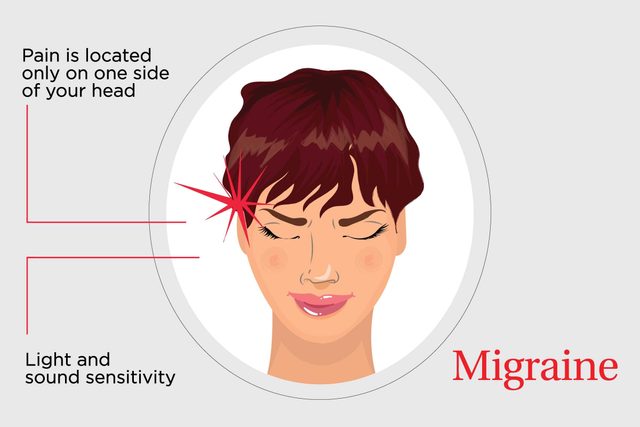
One side of your head: Migraine
If the pain is located only on one side of your head (either the left or the right) and it feels like it’s throbbing or pulsating, it’s likely a migraine. And while there are more than a dozen reasons why you might suffer from migraines, there’s no question that they’re rough to get through. “This pain typically is severe and affects your functioning,” says Raissa Villanueva, MD, MPH, a neurologist at the University of Rochester Medical Center. It may also come with other debilitating symptoms like light and sound sensitivity. As for how to get rid of a headache in this instance, your best option is to stop what you’re doing and rest, she advises. If they’re frequent enough to affect your life, seek help from a doctor who may look into a preventative Rx.
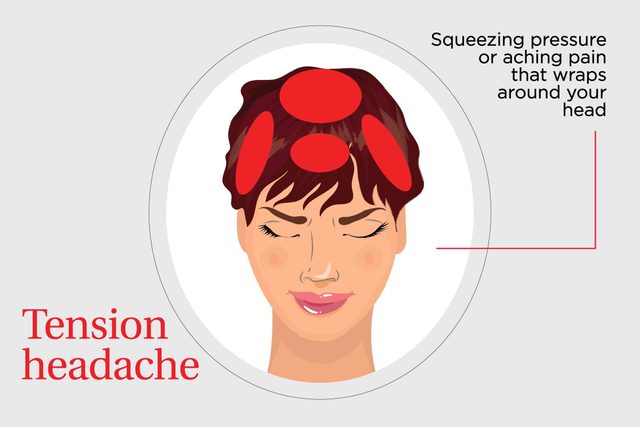
Wraps around your head: Tension headache
A squeezing pressure or aching pain that wraps around your head is likely a tension-type headache. You might want to check into everyday habits that can relieve your headaches—because these are no fun. “Patients often say it’s like having a vice around their head,” says Villanueva. Taking OTC pain relievers like NSAIDs or acetaminophen as directed can nip the pain in the bud. Even better: Combo medications containing aspirin, acetaminophen, and caffeine have been found to give sufferers relief two hours later compared to taking acetaminophen alone or a placebo, per research in The Journal of Headache and Pain. (Caffeine may help make the active ingredients more potent.) Here’s exactly what (and how much) headache medication to take.
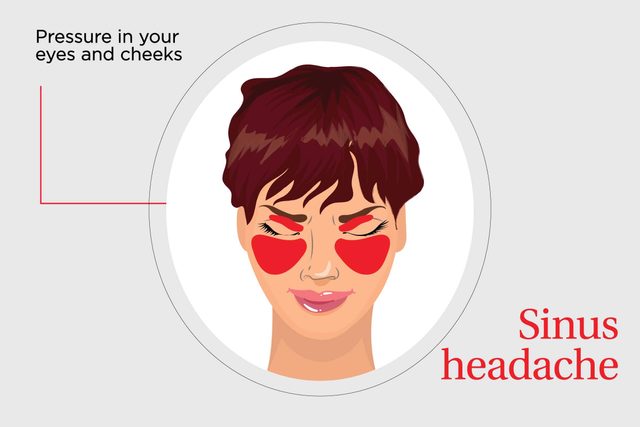
In your face: Sinus headache
If you feel pressure in your eyes and cheeks, you probably assume sinus headache. But these are actually pretty rare and are often actually migraines, which are the more likely cause of facial pain, notes Villanueva. If you’ve been diagnosed with a viral or bacterial infection (and have clear symptoms of a sinus infection like aching teeth, lack of smell), your doctor will likely prescribe antibiotics (if it’s bacterial) or suggest nasal decongestant sprays or antihistamines. Try and avoid these headache triggers.
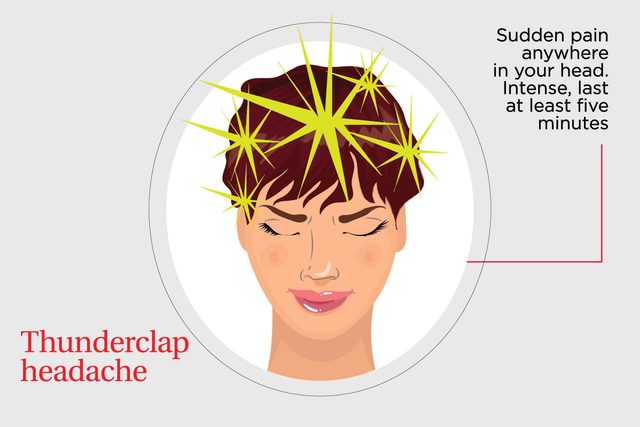
Sudden pain anywhere in your head: Thunderclap headache
There are a few signs your headache is something more serious—and a thunderclap headache can be one of them. It feels like a lightning strike inside your head. They are intense, last at least five minutes, and you may not know why they’re happening, according to the American Migraine Foundation. When you’re talking about types of headaches, this one should send off alarm signals. If you experience one, get in touch with your doctor or go to the ER. They can be caused by life-threatening conditions like a brain aneurysm, stroke, or a brain hemorrhage. Watch for these signs of a brain aneurysm and get help ASAP.
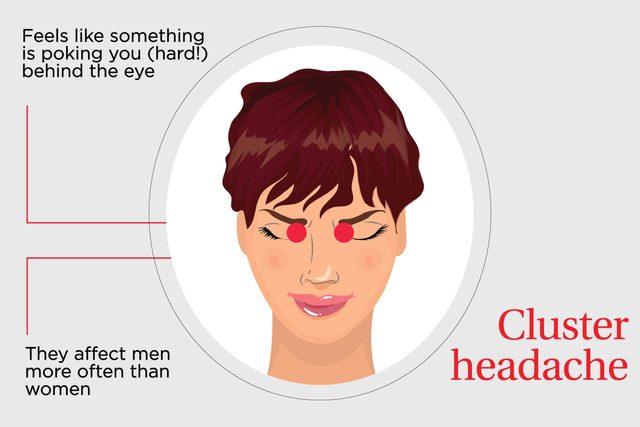
Behind your eye: Cluster headache
If it feels like something is poking you (hard!) behind the eye, it may be a cluster headache. “These are also called suicide headaches because the pain is very, very severe,” says Villanueva. They affect men more often than women, and are associated with other symptoms like redness in the eye with the pain, tearing in that eye, nose running on that side, or droopiness of the eyelid on that side, she adds. You may also feel agitated and want to get up and pace. Unfortunately, as Villanueva notes, people suffer through them for years before getting diagnosed. The right diagnosis is so important because they’re treated differently than migraines (which also hit on one side). As for how to get rid of a headache like this, your MD may suggest high-flow oxygen treatment (where you inhale oxygen from a face mask).
Here’s what to do if you suddenly wake up with stomach pain.
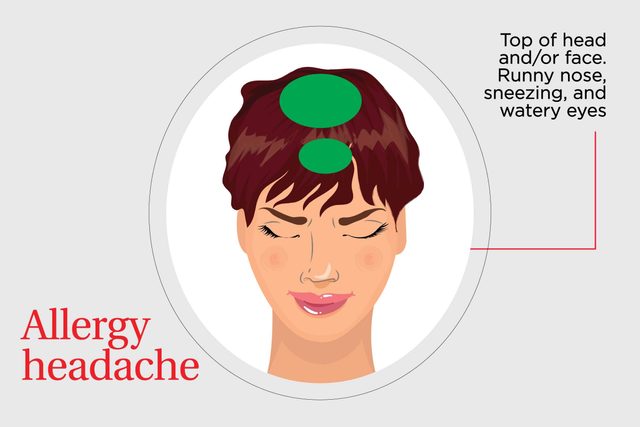
Top of head and/or face: Allergy headache
Although they involve the sinuses, allergy-induced headaches are seasonal, and you’ll experience other symptoms like runny nose, sneezing, and watery eyes. You’ll want to get a diagnosis from your doctor to correctly ID the problem. For headache relief, treatment includes avoiding allergy triggers, while using OTC or prescription antihistamines and decongestants, says Villanueva.
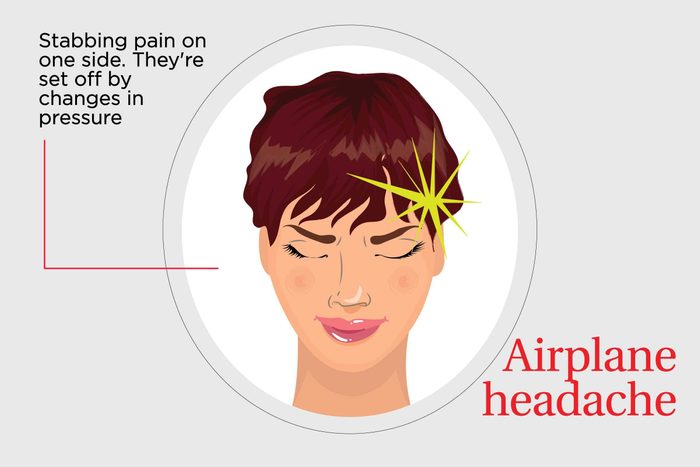
Stabbing pain on one side: Airplane headache
As if air travel wasn’t hard enough, one in 12 people suffer from something called airplane headaches. They’re set off by changes in pressure during the airplane trip. To lower your risk of getting one, try to manage your stress (not always an easy thing in an airport), stay hydrated, and take an OTC painkiller when you feel the ache approaching.
Think you might be dealing with vertigo? Here’s how to cope.
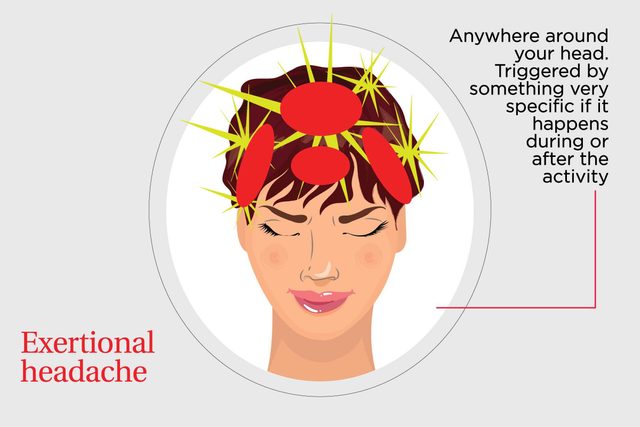
Anywhere around your head: Exertional headache
You’ll know your head pain is triggered by something very specific—exercise, orgasm—if it happens during or after the activity. Exertional headaches may stick around for five minutes up to two days, according to the American Migraine Foundation (AMF). They also have rather variable symptoms, says Villanueva. “They can be severe, one-sided, pulsating, aching, or make you nauseous,” she says. It’s actually rare (and exercise-triggered migraines are different), but you need to see a doctor who will evaluate you for an underlying reason for the pain, as well as more serious causes like a hemorrhage. The good news is that if there’s no medical problem causing these headaches, they typically go away after six months. In the meantime, taking naproxen 30 to 60 minutes before a workout can help, the AMF notes. (Consult your doctor before starting any new medication.) Next, checkout 50 reasons why you’ll age better than your parents.
